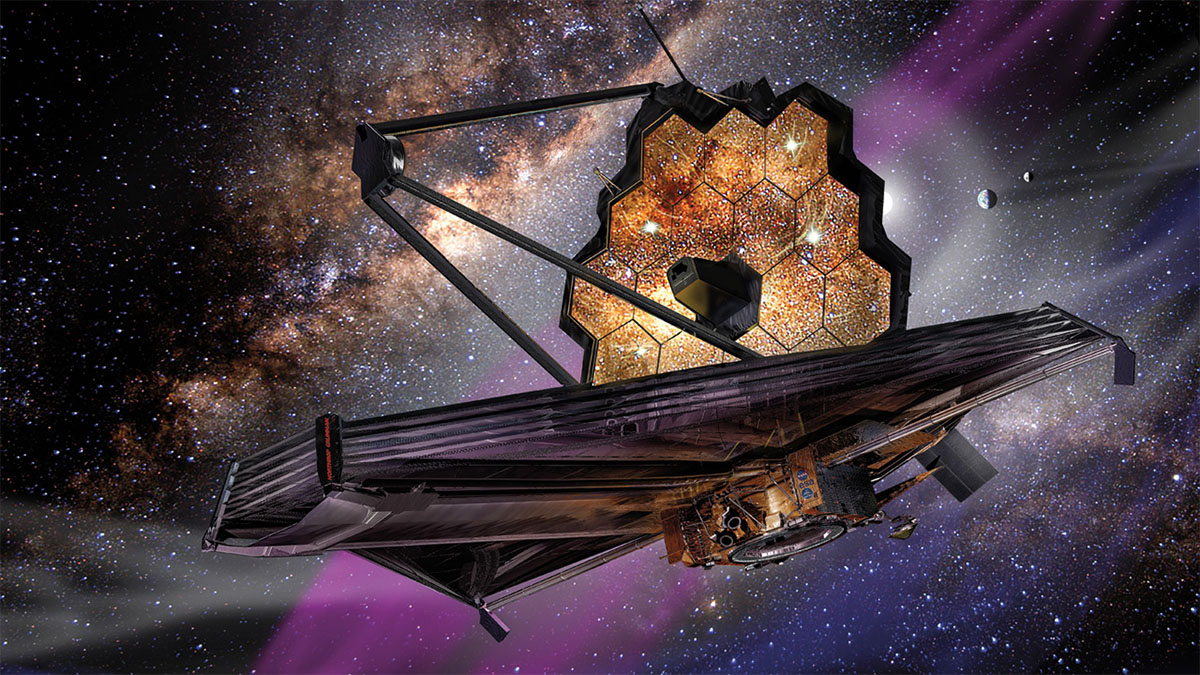how to spot aliens with a telescope

The James Webb Space Telescope, the world’s most expensive and high stakes origami project, is now safely deployed and parked almost a million miles away from Earth in the L2 gravity well. For the next several decades it will study the birth of the cosmos, help us find new exoplanets, and provide enough data to either solve some of space’s deepest mysteries or raise even more perplexing new questions. It’s a very powerful telescope placed in the absolute best place for one to be, close enough for reliable communication but with its back firmly to the Sun, Moon, and Earth, away from interference, and chilled to run at pretty much optimal efficiency, so a lot of scientists and enthusiasts are wondering about how to use it to its full potential.
One of those ideas? Using the JWST to hunt down signs of alien life. This is, of course, far more difficult than it sounds. Stars are very large and bright, and planets where said life would likely exist are very small and dim. Trying to find even the largest and most complex city on another world in an alien solar system would be like trying to spot a desk lamp next to a lighthouse. It’s possible, but it takes extremely careful observation of certain stars, and even then, the absolute best-case result with even JWST and AI enhancements would be a few smudged pixels. But that might just be enough if you’re not limiting yourself strictly to looking for direct observations of intelligent life building interstellar empires.
Given the limits we just discussed, we’d have to focus on indirect but telltale signs of an active biosphere by analyzing the light in those few smudged pixels. As starlight hits different gases in an atmosphere, it produces different colors, with the molecules of those gasses acting like tiny prisms. Comparing the presence and prevalence of certain colors, we can understand the basic chemical makeup of another world’s atmosphere, something we’ve been able to do a few times even with today’s tools. Webb would give us a slightly more detailed picture, one in which we could try to spot naturally occurring gasses that shouldn’t be in the atmosphere for long, or odd combinations of gases that shouldn’t exist side by side.
Both of those are actually present in Earth’s light thanks to our flora. Oxygen is highly reactive and would quickly dissipate unless it was being constantly emitted back into the air by plants as a byproduct. Likewise, ozone and methane are both just as reactive and should not be present in notable amounts alongside oxygen. Only living things exhaling gigatons of them explains the observed chemical signature. If we find other reactive gasses coexisting in the atmosphere of an alien world, it’s a good bet that it has a very large and active ecosystem that could support itself for hundreds of millions of years, and potentially provide a habitat for more complex life, which opens the door to further research, now with concrete targets.
Unfortunately, more exotic observations like trying to detect alien spacecraft or wakes from their relativistic rockets would probably be completely out of the question unless those craft are the size of planets but detecting forests on distant worlds would be nothing to take lightly. After all, we’re not just talking about some promising chemical signals of a living thing, we’re talking about entire biospheres. And on top of that, some planets we already discovered may even be more habitable than Earth if the right conditions exist in their atmospheres, so we already have candidates to scan for these sorts of surveys. It’s entirely possible that Webb could eventually tell us both where we came from, and whether we’re all alone.





